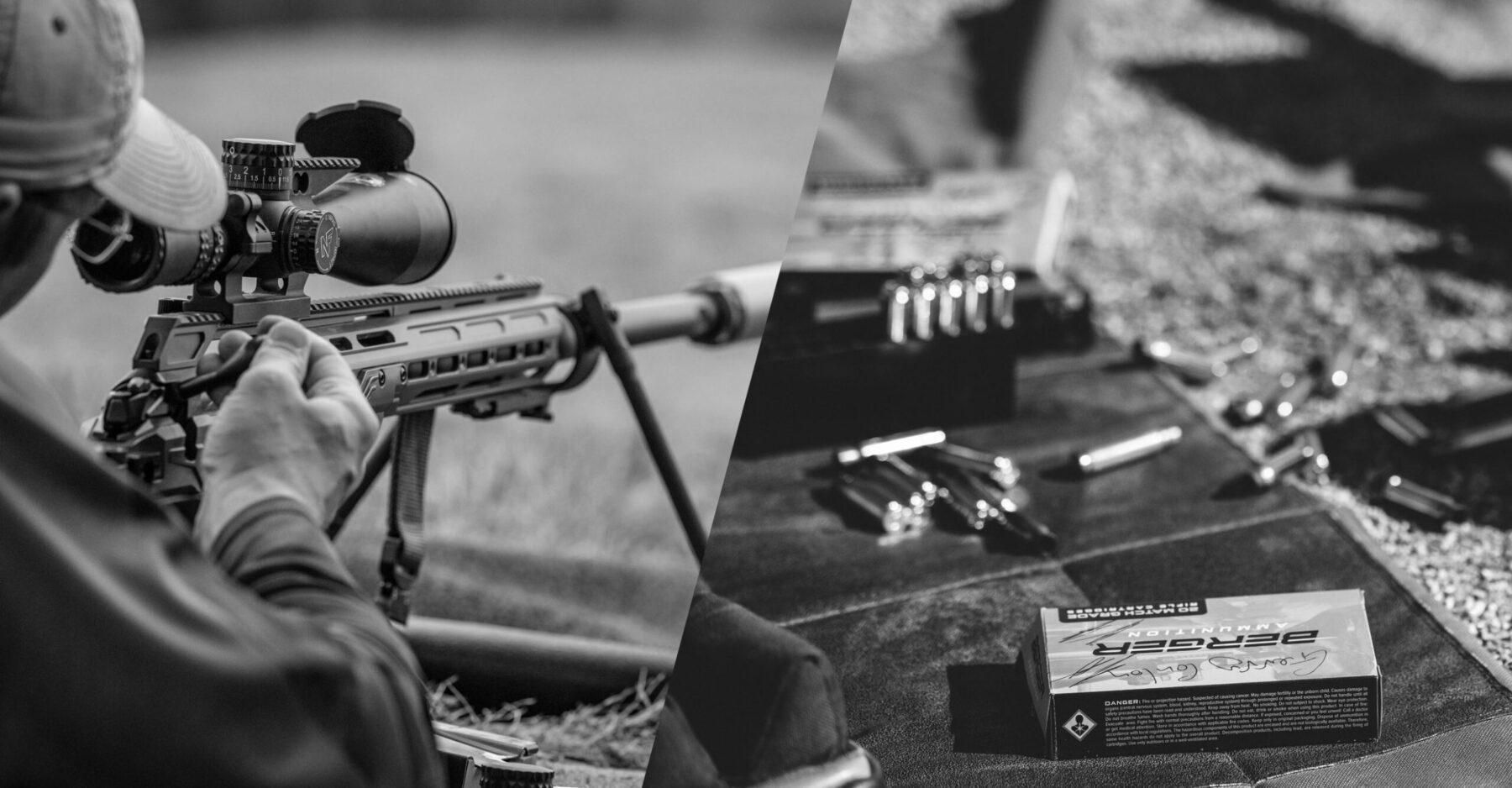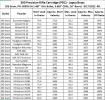PApa Black
Well-Known Member
- Joined
- May 23, 2012
- Messages
- 460
Berger Bullets' Eric Stecker has just made available a tech bulletin in Word format.
You may download it here to save it one your own computer or read it online.
Getting the Best Precision and Accuracy from VLD bullets in Your Rifle
Background
VLD bullets are designed with a secant ogive. This ogive shape allows bullets to be more efficient in flight (retain more velocity = less drop and wind deflection). While this result is desirable for many rifle shooters the secant ogive on the VLD bullets produces another result in many rifles. It can be difficult to get the VLD to group well (poor accuracy).
For years we encouraged shooters to use a base of cartridge to end of bearing surface OAL (I will use the term COAL to represent this dimension) which allows the VLD to touch the rifling or to be jammed in the rifling. This provided excellent results for many shooters but there were others who did not achieve top performance with the VLD jammed in their rifling. These shooters were left with the belief that the VLD bullets just won't shoot in their rifle.
Other groups of shooters were discouraged by our recommendation to touch the rifling. Some of these shooters knew that at some point during a target competition they will be asked to remove a live round. With the bullet jammed in the rifling there was a good chance the bullet will stick in the barrel which could result in an action full of powder. This is hard on a shooter during a match.
Yet another group of shooters who were discouraged by our recommendation to touch the rifling are those who feed through magazines or have long throats. Magazine length rounds loaded with VLDs could not touch the lands in most rifles (this is the specific reason that for years we said VLD bullets do not work well in a magazine). When a rifle could be single fed but was chambered with a long throat a loaded round that was as long as possible still would not touch the rifling.
Until recently, shooters who suffered from these realities were believed to be unable to achieve success with VLD bullets. Admittedly, we would receive the occasional report that a rifle shot very well when jumping the VLD bullets but we discounted these reports as anomalies. It was not until the VLD became very popular as a game hunting bullet that we were then able to learn the truth about getting the VLD bullets to shoot well in a large majority of rifles.
After we proved that the Berger VLD bullets are consistently and exceptionally capable of putting game down quickly we started promoting the VLD to hunters. We were nervous at first as we believe the VLD needed to be in the rifling to shoot well and we also knew that most hunters use a magazine and SAMMI chambers. Our ears were wide open as the feedback was received. It was surprising to hear that most shooters described precision results by saying "this is the best my rifle has ever shot."
We scratched our heads about this for awhile until we started getting feedback from hunters who were competition shooters as well. Many were the same guys who were telling us for years that the VLDs shoot great when jumped. Since a much larger number of shooters were using the VLD bullets with a jump we started comparing all the feedback and have discovered the common characteristics in successful reports which gave us the information needed to get VLD working in your rifle. We were able to relay these characteristics to several shooters who were struggling with VLD bullets. Each shooter reported success after applying our recommendation.
Getting the Best Precision and Accuracy from VLD bullets in Your Rifle
Solution
The following has been verified by numerous shooters in many rifles using bullets of different calibers and weights. It is consistent for all VLD bullets. What has been discovered is that VLD bullets shoot best when loaded to a COAL that puts the bullet in a "sweet spot". This sweet spot is a band .030 to .040 wide and is located anywhere between jamming the bullets into the lands and .150 jump off the lands.
Note: When discussing jam and jump I am referring to the distance from the area of the bearing surface that engages the rifling and the rifling itself. There are many products that allow you to measure these critical dimensions. Some are better than others. I won't be going into the methods of measuring jam and jump. If you are not familiar with this aspect of reloading it is critically important that you understand this concept before you attempt this test.
Many reloaders feel (and I tend to agree) that meaningful COAL adjustments are .002 to .005. Every once in a while I might adjust the COAL by .010 but this seems like I am moving the bullet the length of a football field. The only way a shooter will be able to benefit from this situation is to let go of this opinion that more than .010 change is too much (me included).
Trying to find the COAL that puts you in the sweet spot by moving .002 to .010 will take so long the barrel may be worn out by the time you sort it out if you don't give up first. Since the sweet spot is .030 to .040 wide we recommend that you conduct the following test to find your rifles VLD sweet spot.
Load 24 rounds at the following COAL if you are a target competition shooter who does not worry about jamming a bullet:
1. .010 into (touching) the lands (jam) 6 rounds
2. .040 off the lands (jump) 6 rounds
3. .080 off the lands (jump) 6 rounds
4. .120 off the lands (jump) 6 rounds
Load 24 rounds at the following COAL if you are a hunter (pulling a bullet out of the case with your rifling while in the field can be a hunt ending event which must be avoided) or a competition shooter who worries about pulling a bullet during a match:
1. .010 off the lands (jump) 6 rounds
2. .050 off the lands (jump) 6 rounds
3. .090 off the lands (jump) 6 rounds
4. .130 off the lands (jump) 6 rounds
Shoot 2 (separate) 3 shot groups in fair conditions to see how they group. The remarkable reality of this test is that one of these 4 COALs will outperform the other three by a considerable margin. Once you know which one of these 4 COAL shoots best then you can tweak the COAL +/- .002 or .005. Taking the time to set this test up will pay off when you find that your rifle is capable of shooting the VLD bullets very well (even at 100 yards).
Regards,
Eric Stecker
Master Bulletsmith

Shooting Knowledge
We've solicited shooting champions and reloading experts to share their shooting knowledge with the world. Here you will find a curated database of guides, tips, and tricks for everything from the basics of reloading to advanced information about the scientific theories involved with shooting a...

